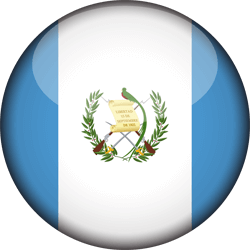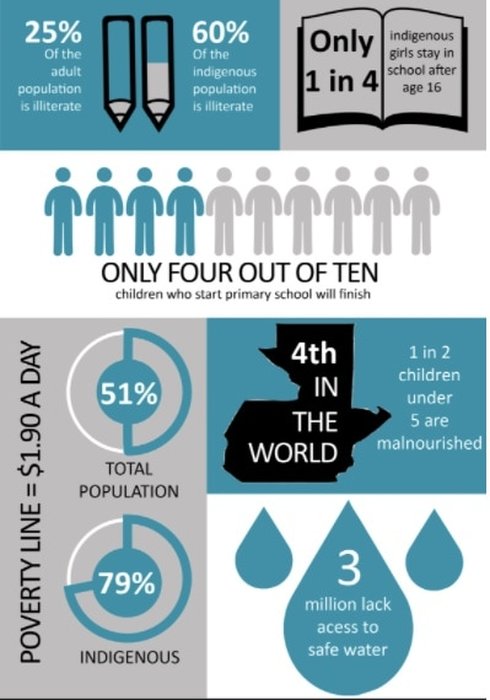Facts About Guatemala |
|
|
Guatemala is facing unique challenges in Latin America.
Its 40% indigenous population faces widespread discrimination and disenfranchisement, and still feels the effects of the thirty-year civil war. Along with El Salvador and Honduras, Guatemala is one of the most dangerous countries in the world outside of active war zones, and thousands of Guatemalans find it better to flee to the United States illegally. For a population already vulnerable, natural disasters have been devastating. Tropical Storm Agatha left Guatemala on May 30 2010, leaving 165 people dead, 113 missing, and over 100,000 affected by the destruction of their homes, crops or livelihoods. One month later, Tropical Storm Alex added two more to the death toll and 2,000 to the number of material victims. Families are still struggling to recover from the impact. EDUCATION:
|
HEALTH:
WORK AND INCOME:
- Approx 49% of children in Guatemala are chronically malnourished. This is the fourth highest rate in the world. In indigenous communities the rate is closer to 70%.
- Although infant and child mortality has been steadily decreasing throughout Latin America over the last four decades, child mortality is still 70% higher among indigenous children.
- The rate of stunting [height/age] for Guatemala overall is 44%, but for indigenous children the rate is 58%, higher than either Yemen or Bangladesh.
- There is a 13 year gap in years of life expectancy between indigenous and non-indigenous people
- 40% of the country lacks access to water and sanitation systems and have limited access to an adequate diet due to income restrictions.
- Only 34% of women of reproductive age use a modern method of birth control, while almost a third report an unmet need for family planning.
- The fertility rate (4.4) is the highest in Latin America. At the current annual growth rate of 2.5%, the population is expected to double within the next 30 years.
WORK AND INCOME:
- Indigenous people suffer from discrimination in terms of employment and income, making on average about half of what non-indigenous workers earn.
- In Guatemala, indigenous peoples’ poverty rates are 2.8 times higher than the rest of the population.
- Half the population lives on incomes below the poverty line and 17% are considered extremely poor by the United Nations.




